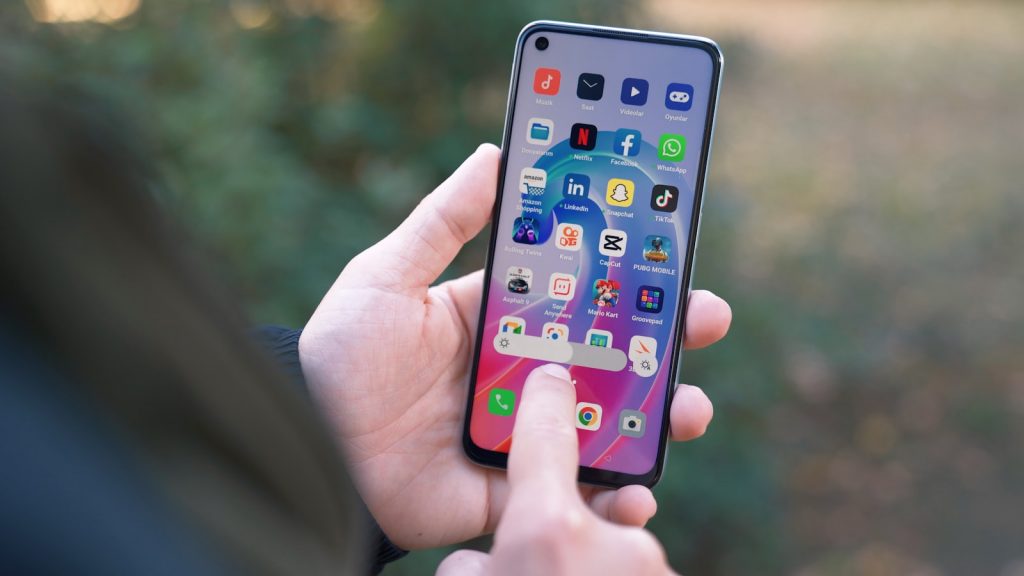Necro Trojan

Understanding the Threat: What is the Necro Trojan?
The Necro Trojan represents a significant menace to Android device users. Initially identified within the confines of a popular text recognition app, which amassed over 100 million downloads on Google Play, this malware has evolved. Its primary function is to act maliciously by stealing data and facilitating additional harmful activities such as downloading more malware or executing arbitrary commands. Necro's evolution involves a more feature-rich version that finds its way onto devices through both official app stores and unofficial sites. This advanced Trojan employs obfuscation techniques to dodge detection and utilizes steganography to conceal its malicious payload within innocuous-looking images. Once on a device, it can load and execute DEX files, which are compiled Android codes, install apps without the user's consent, create invisible windows to display and interact with ads, and even subscribe the victim to paid services surreptitiously.
The Mechanics of Necro: How It Infects Your Device
Necro infiltrates devices through a cunning variety of channels. Primarily, it gets embedded into modified versions of popular applications, such as the notorious Spotify Plus mod, and distributed on unofficial websites. These platforms often mislead users by promoting these mods as enhanced or feature-rich versions of legitimate apps, masking the underlying malware. Furthermore, Necro has not spared official app platforms; it has been discovered within legitimate applications on Google Play, including Wuta Camera and Max Browser, among others. This method of infection highlights the Trojan's capability to bypass conventional security checks to plant its loader within the code of innocent-looking apps. Additionally, various game mods for well-loved titles like Minecraft and Stumble Guys serve as vehicles for Necro's dissemination. The Trojan's versatility in deployment underscores the advanced tactics employed by threat actors to ensure its successful spread and the subsequent compromise of Android devices globally.
Identifying the Source: How Google Play Apps Harbor Necro Trojan
The revelation that Google Play, a trusted source for Android applications, can serve as a conduit for malware distribution has alarmed users and developers alike. The Necro Trojan's inclusion in widely used applications such as Wuta Camera and Max Browser raises questions about the vetting process for apps on the platform. These discoveries underscore the sophisticated methods employed by cybercriminals to infiltrate trusted ecosystems. By embedding the Trojan within the code of legitimate-looking applications, attackers take advantage of the vast user base of the official app store. The technique of leveraging an advertising SDK, named 'Coral SDK,' with obfuscated malicious activities and image steganography for downloading secondary payloads reveals the lengths to which perpetrators will go to avoid detection. This situation highlights a critical challenge for app marketplaces in ensuring the integrity of the apps they offer and protecting their users from such deceitful tactics.
Common Apps Infected by Necro Trojan
Among the notable instances of Necro Trojan infection, the Wuta Camera app stands out with over 10 million downloads. At the same time, Max Browser had amassed around 1 million users before their respective infections were reported and acted upon. These instances are not isolated, as other popular applications, including modified versions of Spotify, WhatsApp, Minecraft, and several others, have been implicated as carriers of the Necro Trojan through unofficial platforms. The spread of Necro through such widely used applications signifies a broader threat landscape where no app, regardless of its popularity or source, is beyond the reach of malware authors. Google's removal of the infected apps post-notification is a reactive measure, but it highlights the ongoing battle between app stores and cyber criminals.
Telltale Signs an App May Be Infected
- Unusual Behavior: Apps infected with the Necro Trojan may exhibit irregular behavior such as crashing, displaying an excessive number of ads, or loading slowly.
- Unauthorized Activities: Watch for unexpected activities on your device, such as the installation of unknown apps, sudden subscriptions to paid services, or unsolicited access to certain device features like the camera or microphone.
- Increased Data Usage: Since Necro can download additional payloads, infected devices may show an unexplained surge in data usage.
- Poor Device Performance: The execution of arbitrary code and additional malware can significantly tax the device's resources, leading to slower performance and battery drain.
- Security Warnings: Utilize a reliable mobile security solution that might detect and alert you about the presence of Necro or other threats.
Identifying an app as malicious before downloading it requires vigilance and perhaps a reliance on reviews and the reputation of the developer. However, these indicators can help users recognize potentially compromised applications already on their devices, enabling them to take necessary protective or corrective actions.
Proactive Measures: How to Protect Your Android Device
Amidst the ever-growing threats of trojans and malware like Necro, safeguarding your Android device becomes paramount. Protecting your device involves a multi-pronged approach that ranges from practicing cautious downloading habits to leveraging technology designed to thwart such threats. The first step towards protection is understanding the risk—acknowledging that even official sources like Google Play are not immune to malware. Subsequently, adopting a mindful approach towards downloading apps, especially those that come from unofficial sources, can significantly reduce the risk of infection. Enhancing your device's security settings, keeping software up to date, and installing a reputable antivirus solution form the cornerstone of a robust defense against the Necro Trojan and similar malware.
Adjusting Your Google Play Settings for Maximum Security
Google Play offers a suite of security features designed to protect your device from malicious apps and malware. Enabling these features can provide a significant layer of security. Here's how to adjust your settings for optimal protection:
- Keep Play Protect Active: Google's Play Protect continuously scans your device for harmful apps and notifies you if any are found. Ensure this feature is enabled by navigating to the Play Store settings, tapping on your profile icon, and selecting 'Play Protect' followed by 'Settings.' Here, activate 'Scan apps with Play Protect.'
- Update Preferences: Set your device to auto-update apps, ensuring you're always running the latest versions with the most recent security patches. This can be done within the Google Play settings under 'Auto-update apps.'
- Review App Permissions: Regularly check and manage app permissions to ensure apps don't have access to unnecessary data or system features.
Adopting these measures can greatly enhance your device's ability to fend off infections from apps downloaded via Google Play, offering a more secure Android experience.
Mitigating the Damage: What to Do If Your Device Is Infected
Discovering that your Android device is infected with the Necro Trojan can be alarming. However, immediate and effective actions can mitigate the damage and secure your device. Prioritize removing the Trojan to prevent data theft, unauthorized transactions, and additional malware downloads that could further jeopardize your privacy and device integrity.
Steps to Remove Necro Trojan from Your Android Device
The removal of the Necro Trojan from an infected Android device involves a series of systematic steps. First, ensure that your device's software is up-to-date to benefit from the latest security patches. Then, scan your device with reputable antivirus software designed specifically for Android systems.
- Enter Safe Mode: Restart your device in Safe Mode to temporarily disable third-party apps, including malicious ones. This step makes it easier to identify and remove the Trojan without it being active and potentially hindering the removal process.
- Locate and Remove Suspicious Apps: Check your list of installed apps for any that you do not recognize or remember downloading. Malicious apps often disguise themselves with generic names to avoid detection. Uninstall any suspicious apps.
- Clear Browser Cache and History: Malicious scripts related to the Trojan can reside in your browser. Clearing the cache and history of all installed browsers can help remove these traces.
- Change Passwords: After the removal process, change the passwords for your accounts, especially those containing sensitive information. This action helps secure your accounts against potential unauthorized access.
- Reset to Factory Settings: If the infection persists or your device is still behaving erratically, consider performing a factory reset as a last resort. This action will erase all data from your device, including the Trojan, but ensure you back up important data first.
Regularly monitoring your device's health through antivirus scans and staying vigilant about the apps you install can prevent future infections. Employing a proactive approach to device security can help safeguard your personal information against Necro Trojan and other malicious software.
Staying Updated: How to Keep Abreast of Emerging Threats
With the digital landscape constantly evolving, staying informed about the latest cybersecurity threats, particularly those targeting Android devices, is crucial. Cybercriminals continually develop new and more sophisticated ways to exploit vulnerabilities, making it imperative for users to stay one step ahead. Regularly updating your knowledge on security threats can help you adopt preventative measures in a timely manner and keep your device secure. Engaging with reliable sources of information plays a pivotal role in staying updated on these emerging threats.
By integrating these sources into your routine web browsing or setting up notifications for updates, you can significantly enhance your awareness and understanding of the security challenges facing Android devices today. Armed with this knowledge, you can better protect your device from emerging threats like the Necro Trojan and others.

Leave a Reply
Please note that we are not able to assist with billing and support issues regarding SpyHunter or other products. If you're having issues with SpyHunter, please get in touch with SpyHunter customer support through your SpyHunter . If you have SpyHunter billing questions, we recommend you check the Billing FAQ. For general suggestions or feedback, contact us.